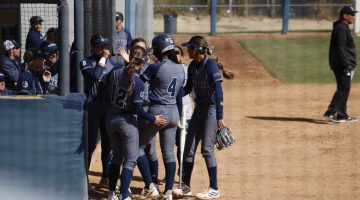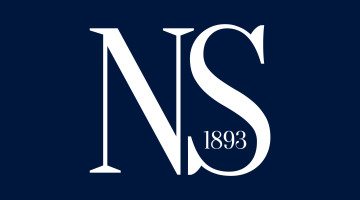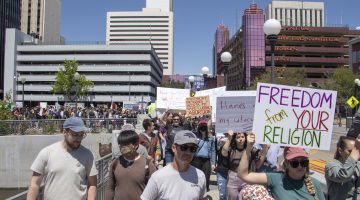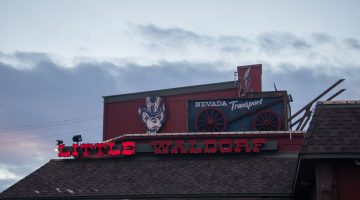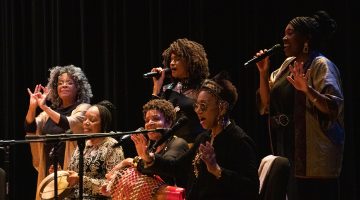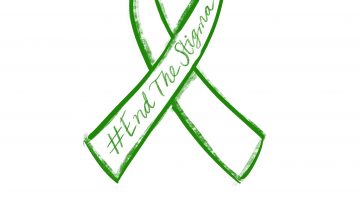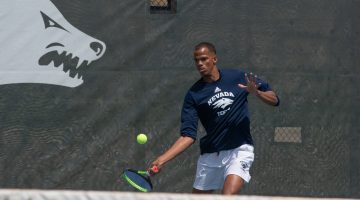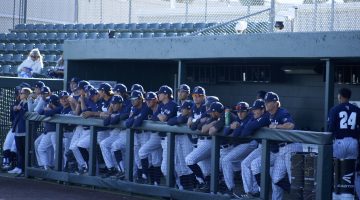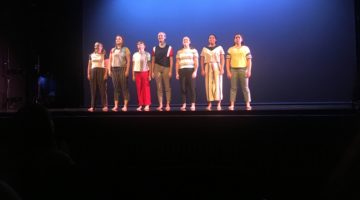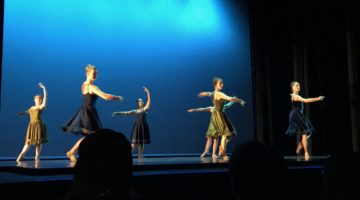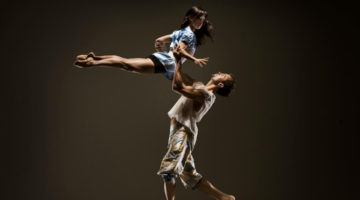By Stephanie Self
As a writer, it is sometimes difficult to grasp the concept of being able to express emotions, stories or ideas through anything but words. Words are how I make sense of the world around me and all of the intangible and abstract stuff in my head. Other times, though, those emotions, stories or ideas are so convoluted and perhaps even confusing that they require other forms of expression in order for them to be understood. Or at least interpreted.
But this is why other forms of expression exist, right? Writing works for me, but so many other people certainly prefer other ways of showing themselves to the world. I can go to an art museum and interpret what has been painted, photographed, sculpted, etc. I can go to a concert and listen to music, even if it’s mostly instrumental, and grasp some sort of meaning from it.
Dancing, though, is something I had never quite been able to fully connect with, despite how much I loved seeing it and doing it myself — although, most of my dancing usually takes place in clubs or in the solitude of my apartment, and it’s never choreographed.
No matter how many times I watched “Center Stage” and “Save the Last Dance” as a pre-teen, I couldn’t analyze or interpret dance the way that I could other art forms.
I was surprised, then, to experience so many emotions as intensely as I did while watching almost every performance during the Fall Dance Festival at Nightingale Concert Hall this past weekend. Despite my novice experience with dance, especially writing about it, the passion and energy that was being transferred from each dancer to the audience was palpable.
Of the 11 performances at the festival, three were choreographed by faculty members for students, seven were choreographed and performed by students and one was choreographed and performed by new assistant professor, Rosie Trump.
The opening performance, “The Light Within,” choreographed by student Shelby Wilburn, was as perfect a way to begin the night if there ever was one. As the curtains opened, the dancers stood in a line wearing simple white dresses, some of them holding candles and others holding sheets of paper.
They first danced across the stage to a delicate piano, but the music soon changed to a more melodic and substantial sound, and the dancing followed suit. What started as a gentle and pretty performance crescendoed into one of strength and ambition as its metaphorical light began to shine brighter and brighter. The piece served as a wonderful jumping off point because it immediately showed the spirit and determination of each dancer in this humble department at the University of Nevada, Reno.
The next performance was vastly different from the first. Assistant professor Rosie Trump choreographed “The Bag Ladies,” which I interpreted to be making a statement about wastefulness and materialism in today’s society.
The five dancers wore 60s-style clothing and carried bags full of trash, and they proceeded to dance with their trash. One took the caps off of many plastic bottles and tried balancing them on her chest while crushing the bottles with her feet. Another made a new outfit out of plastic grocery bags, and another danced across stage with empty soda can boxes on her feet.
It was playful, serious, funny and downright weird.
The piece felt quite complex and largely open to interpretation. It was one of the most memorable performances of the night, if not because of the strange interactions the dancers had with trash, then because it was unlike any dance performance I had seen before. And I mean this in the best way possible.
“The Aftermath,” choreographed by student Jonathan Serafin, was another standout. Perhaps it was my soft spot for the melodic sounds of “Days to Come” by Seven Lions that played, but there was something so powerful and emotional about how each dancer seemed to be both reaching out in painful desire and leaping with joy at the same time.
The dancing itself was not unlike anything I had seen, however, the combination of the music and the yearning in every dancers’ leap, twirl and stretch made for a particularly emotional performance that had me leaning over to my friend during the bow to say, “I felt everything.”
I would be remiss to not mention the final performance: “Origins, myths and tales of the Great Basin Watershed,” choreographed by dance Letter of Appointment Katie Dahlaw. Told in three parts, a computer-animated video from the Tahoe Environmental Research Center at UC Davis entitled “Tahoe in Region and Geological Context” projected onto the backdrop of the stage.
The dancers somersaulted, dove and leapt across stage in synchronicity with the tribal rhythms that carried throughout. It was one of the most unique performances of the night, and the monumental feat of enacting the creation of the Great Basin through dance was an appropriate ending to an eclectic festival.
Whether the piece was apparently making a statement on materialism and wastefulness, exploring the bittersweet aftermath of a relationship, a portrait of ambition and strength or telling the tales of the Great Basin Watershed, I, indeed, felt what was being expressed on stage. Even if I can’t put it into words, that’s not really the point. Sometimes there are emotions, events, ideas and perspectives that can be expressed in a plethora of ways that can simply be known, felt and left at that.
Stephanie Self can be reached at self@http://archive.archive.nevadasagebrush.com.


